Disclosure: This article contains affiliate links. We may earn a commission from purchases at no extra cost to you, which helps our travel content.
There's something magical about standing on the shores of the Mozambique Channel, watching the sunset paint the sky in impossible hues while local fishermen haul in the day's catch. After decades of chasing waterfalls across six continents with my now-grown children, I've found myself increasingly drawn to places where natural beauty and culinary adventure intersect. Mahajanga—Madagascar's laid-back coastal gem—delivers both in spades, with a seafood scene that rivals any I've encountered in my 15 years of travel writing.
The Seafood Markets: A Symphony for the Senses
My love affair with Mahajanga's culinary scene begins where all good food stories should—at the source. The Bazary Be market transforms from sleepy outpost to vibrant bazaar by 6 AM, when fishermen arrive with their morning catch. Unlike the sanitized seafood sections of Western supermarkets, this is a full-sensory immersion.
On my second morning, I befriended Mamy, a local fish vendor whose weathered hands moved with surgical precision as she cleaned massive red snappers. 'Choose with your nose first, then your eyes,' she instructed, guiding me through piles of silver-scaled treasures. The prawns here are monstrous—almost intimidatingly large—and impossibly sweet when grilled.
I quickly established a morning ritual: market wandering with my insulated market tote (essential for keeping seafood fresh in the tropical heat), followed by a visit to one of the small spice stalls where I'd collect vanilla pods longer than my hand for about one-tenth the price we'd pay back home.
By day three, vendors recognized me, offering tastes of unusual catches and patient explanations of local cooking methods. The secret to navigating Mahajanga's markets isn't bargaining skills (though they help)—it's genuine curiosity and respect for the culinary expertise that surrounds you.

💡 Pro Tips
- Arrive at Bazary Be before 8 AM for the freshest selection
- Bring small bills (Ariary) as vendors rarely have change
- Ask vendors about cooking recommendations—they're the true experts
Beach Barbecues: Zebu Meets Seafood
The beachfront restaurants along Corniche stretch into a blur of similar menus for the casual observer, but dig deeper and you'll discover each establishment has its specialty. My favorite became Chez Madame Chabaud, an unassuming spot where plastic tables sink slightly into the sand and ceiling fans spin lazily overhead.
Here I discovered Madagascar's unique coastal fusion: the marriage of zebu (local cattle) and seafood traditions. The 'surf and turf' concept exists worldwide, but Madagascar's version features zebu skewers alongside grilled crab in a way that feels both primal and sophisticated.
On my fourth evening, I convinced the chef to let me into his kitchen—really just a series of charcoal grills behind the restaurant. He showed me how they marinate zebu in a paste of garlic, ginger, and local herbs before grilling it alongside massive tiger prawns. The secret ingredient? A splash of local rum in both marinades.
I've since replicated this at home using my portable charcoal grill, though nothing quite captures the magic of eating with your toes in the sand while Indian Ocean waves provide the soundtrack.
For those planning to cook at accommodations, the local markets offer everything needed, but I found having a multipurpose spice grinder invaluable for creating authentic Malagasy spice blends from whole spices.
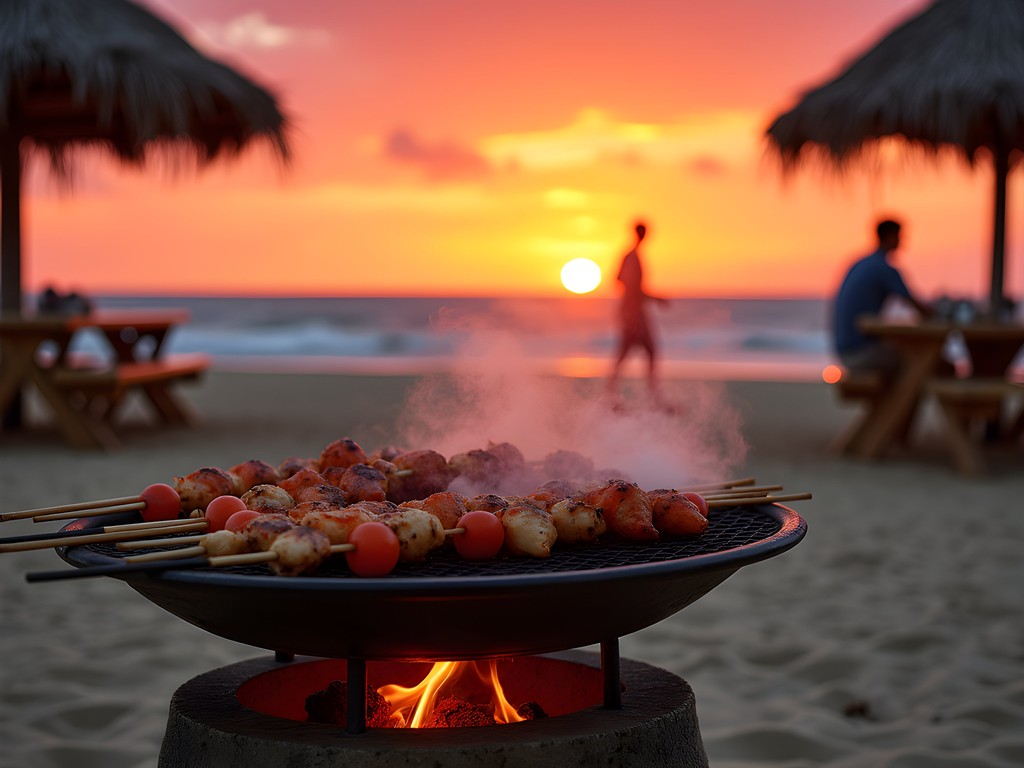
💡 Pro Tips
- Ask for 'vazaha spicy' (foreigner spicy) unless you truly love heat
- The best beach BBQ spots fill up by sunset—arrive by 5:30 PM
- Don't miss the rum-soaked grilled pineapple for dessert
The Coconut Crab Controversy
I've always believed that responsible travel means making informed choices about what we consume. In Mahajanga, this ethical dilemma centers around the magnificent coconut crab—a creature that looks like something from a science fiction film with its basketball-sized body and ability to crack coconuts with its claws.
These prehistoric-looking creatures are increasingly rare but still appear on some menus. After consulting with local conservation experts at the University of Mahajanga, I learned that while not technically endangered in Madagascar, their populations are declining. The slow reproductive cycle makes them vulnerable to overharvesting.
Instead of ordering coconut crab, I discovered the sustainable and equally delicious mud crab curry at La Table du Quai. The restaurant works directly with crab farmers who raise these crustaceans in controlled environments. The curry—rich with coconut milk, local turmeric, and just enough chili to make my nose run—became my go-to comfort food during afternoon thunderstorms.
For those looking to document their culinary adventures, I found my waterproof notebook essential for jotting down recipes and food memories during unexpected tropical downpours. Madagascar's coastal climate is unpredictable at best!

💡 Pro Tips
- Ask about the source of seafood before ordering
- Support restaurants with sustainable fishing partnerships
- Try mud crab as a delicious, sustainable alternative to coconut crab
Cooking with Locals: The Heart of Malagasy Cuisine
By my fifth day in Mahajanga, I'd graduated from market observer to participant in the local food scene. Through my guesthouse host, I arranged a cooking class with Madame Soa, a grandmother whose culinary reputation extends throughout the neighborhood.
In her outdoor kitchen—a charcoal setup shaded by mango trees—we prepared romazava, Madagascar's national dish. While traditionally made with zebu, our coastal version featured three types of local fish, morning glory leaves, and tomatoes so ripe they burst at a touch. The secret, Madame Soa insisted, is the ginger-garlic-chili paste ground fresh on a stone mortar.
'Cooking fast is for restaurants,' she chided when I tried to increase the flame. 'Cooking slow is for flavor.' Four hours later, I understood her wisdom as we shared the most complex, layered fish stew I've ever tasted.
For travelers wanting to bring these flavors home, I recommend investing in a mortar and pestle set. No electric spice grinder captures the aromatic oils released by hand-grinding spices the traditional way.
The afternoon concluded with Madame Soa teaching me to weave palm fronds into plates—an eco-friendly serving vessel that imparts subtle flavor to the food. When my clumsy fingers finally produced something resembling a plate, the neighborhood children who had gathered to watch broke into applause. Some travel souvenirs can't be packed in suitcases.

💡 Pro Tips
- Book cooking classes through local guesthouses rather than hotels for authenticity
- Bring small gifts from your home country for your cooking instructor
- Take photos of each cooking step—the techniques are as valuable as the recipes
Sunset Seafood and Unexpected Music
My final evening in Mahajanga delivered the perfect synthesis of my travel passions—great food, unexpected music, and natural beauty. Following a tip from a French expatriate I'd met at the market, I headed to Antsanitia Beach, a 40-minute tuk-tuk ride from town.
This secluded stretch of coastline hosts a weekly seafood feast where local fishermen bring their catch directly to beach grills. The setup is wonderfully primitive—plastic tables on the sand, kerosene lamps providing ambiance as electricity hasn't reached this stretch of paradise.
I arrived with my solar lantern, which proved invaluable as the evening progressed and became the envy of neighboring tables. After selecting a red snapper from the day's catch, I watched as it was butterflied, rubbed with a paste of lime, chili, and wild garlic, then grilled over coconut husks.
As darkness fell, something unexpected happened. Local musicians—who I later learned were fishermen by day—produced hand-carved instruments and began playing what I can only describe as Malagasy blues. The percussive rhythm of the kabosy (local guitar) blended perfectly with the sound of waves.
Reminded of electronic music festivals I've attended across the globe, I was struck by how universal rhythm feels, whether produced by sophisticated sound systems or handmade instruments on a Madagascan beach. When a young musician noticed my foot tapping, he handed me a seed-filled gourd to shake along. Music, like good food, needs no translation.
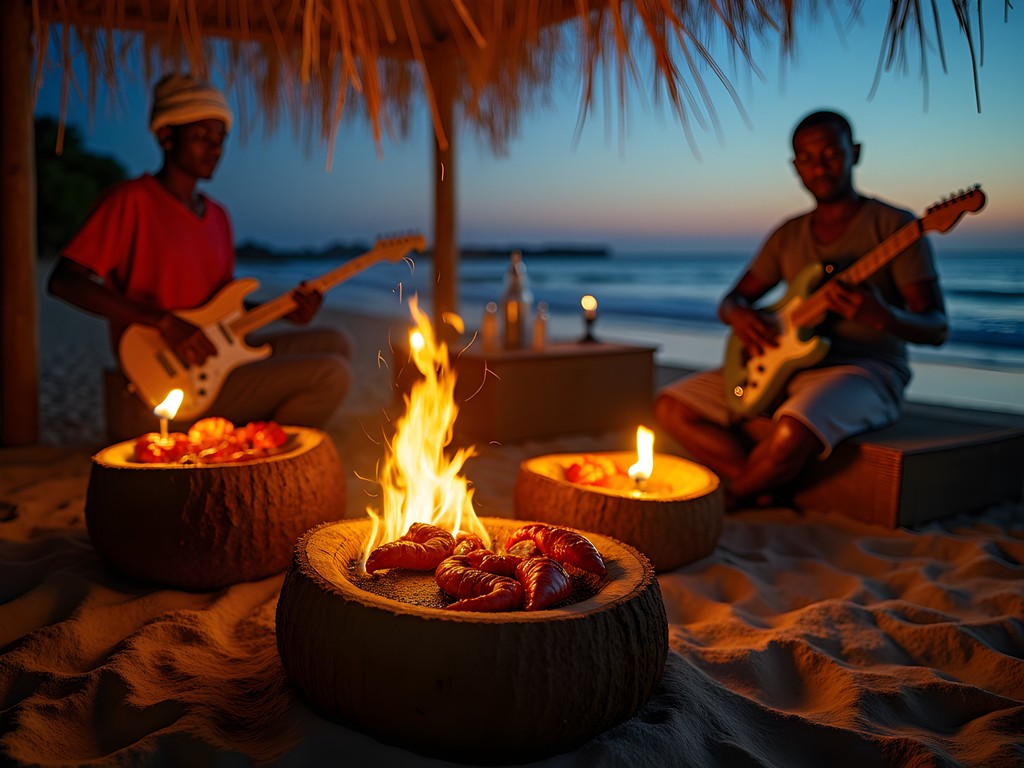
💡 Pro Tips
- Arrange transportation back to town before dark—tuk-tuks become scarce after sunset
- Bring cash for Antsanitia Beach—no cards accepted
- Pack a light sweater as evening sea breezes can be surprisingly cool
Final Thoughts
As my flight lifted off from Mahajanga's small airport, I found myself already planning a return trip—perhaps next time with my adult children in tow. Madagascar challenges the conventional traveler with its infrastructure quirks and occasional frustrations, but rewards the patient with experiences impossible to replicate elsewhere.
The seafood alone justifies the journey, but it's the people behind the food who truly make Mahajanga magical. From Mamy's expert hands at the fish market to Madame Soa's patient cooking lessons, these connections transcend language barriers and cultural differences.
For couples seeking a culinary adventure off the well-worn tourist path, Mahajanga offers the perfect blend of comfort and authenticity. You won't find Michelin stars or white-tablecloth service here—just impossibly fresh seafood prepared with generations of knowledge, served against the backdrop of one of Africa's most stunning coastlines.
In my thirty years of travel across six continents, I've learned that the most memorable meals aren't about perfection—they're about place, people, and the stories we collect along the way. By this measure, Mahajanga serves up a feast for both the palate and the soul. Come hungry for both.
✨ Key Takeaways
- Mahajanga offers world-class seafood without world-class prices
- Connecting with local food producers and cooks provides the richest experience
- Sustainable seafood choices help preserve Madagascar's marine ecosystem
- The best culinary experiences happen away from tourist centers
- Pack patience and curiosity—Madagascar moves at its own delicious pace
📋 Practical Information
Best Time to Visit
May-October (dry season)
Budget Estimate
$50-100 per day excluding flights
Recommended Duration
7-10 days
Difficulty Level
Moderate


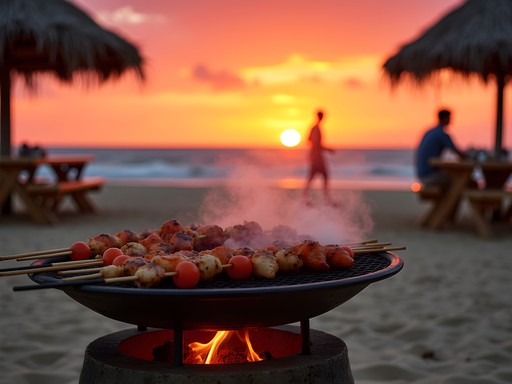
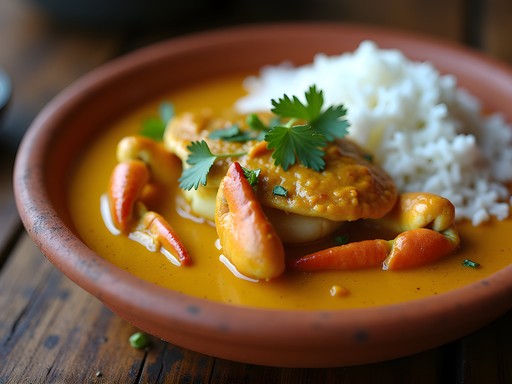
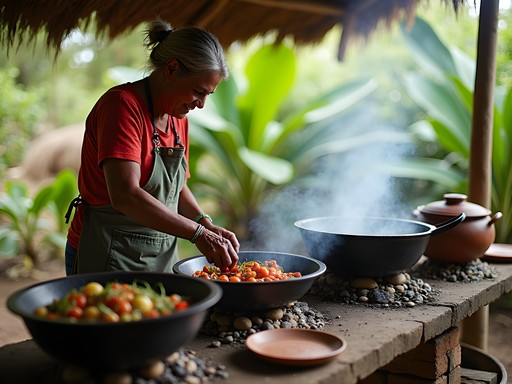
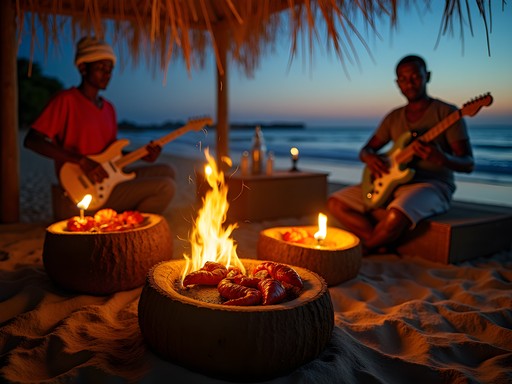


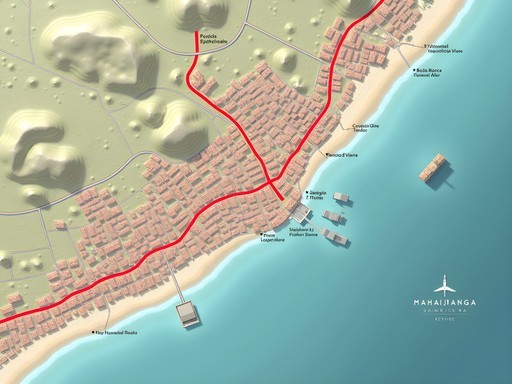





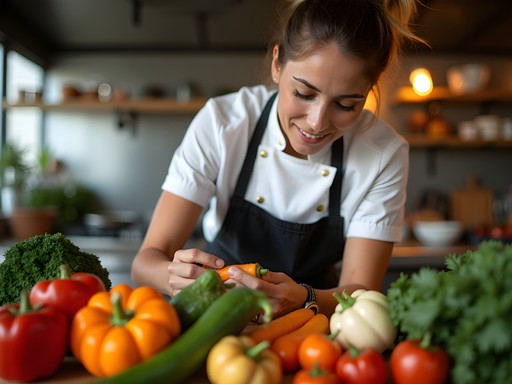

Comments
MadagascarFan
Just got back from Mahajanga last month and can confirm everything in this post! The seafood is incredible. We stayed at a small guesthouse where the owner's mother cooked us the most amazing crab curry I've ever tasted. One tip: if you visit during the rainy season (Nov-March), be prepared for afternoon downpours but the mornings are usually perfect for market visits. The seafood is actually cheaper then too!
beachrider7301
Thanks for the rainy season tip! Was planning my trip for February but worried about the weather. Would you say it's still worth going then?
MadagascarFan
Definitely! February can be wet but the rain is usually predictable (afternoons) and the crowds are way smaller. Just plan your outdoor activities for mornings and you'll be fine. Plus the seafood prices are about 30% lower than high season!
OceanExplorer22
Your beach barbecue description made me hungry! Adding this to my bucket list!
Taylor Moreau
Lauren, your post brought back such wonderful memories of my visit to Mahajanga last year. The seafood market experience is truly unparalleled - I still dream about those giant prawns grilled with lime and local spices! I found that visiting the market early (around 6am) provided the best selection and a chance to see the fishermen bringing in their morning catch. One thing I'd add for readers is to consider taking one of the cooking classes offered near Antsanitia Resort - they teach traditional Malagasy methods of preparing seafood with local ingredients. The vanilla-infused fish curry I learned to make there has become a staple in my home cooking repertoire. Did you encounter any issues with sustainable fishing practices during your visit? It was something I found myself contemplating while enjoying all that incredible seafood.
Lauren Porter
Thanks for sharing that tip about the cooking classes, Taylor! I didn't make it to Antsanitia Resort but now I'm adding it to my list for next time. Regarding sustainability, yes, it was definitely on my mind. I spoke with several local fishermen who mentioned declining catch sizes over the years. Some restaurants are working with conservation groups to promote sustainable practices, particularly the higher-end places along the beach road. Did you bring back any specific spices from your trip? The vanilla is exceptional, but I also became addicted to their unique blend of pepper.
Taylor Moreau
Absolutely! I brought back vanilla (of course), but also that wonderful wild pepper from the east coast and a spice blend called sakay that the chef recommended. I keep it in my spice grinder and use it on practically everything. If you're heading back, definitely check out the small spice market behind the main fish market - there's a woman there who makes her own blends that are extraordinary.
beachrider7301
Those sunset photos are incredible! Did you try that coconut crab? Seems controversial but I'm so curious about the taste!
Lauren Porter
Thanks! Yes, I did try it once at a restaurant that claimed sustainable sourcing. The taste is unique - kind of like a cross between lobster and coconut. But I learned afterward about their conservation status, which is why I included that section about the controversy. If you visit, I'd recommend focusing on the abundant other seafood options!
beachrider7301
Good to know! Will definitely stick to the other seafood options. Planning a trip there next spring!
backpacklife
This looks incredible! I'm planning a trip to Madagascar next year and definitely want to include Mahajanga now. How did you arrange the cooking class with locals? Was it through your hotel or did you find it independently? Also wondering about transportation options from Antananarivo.
Lauren Porter
The cooking class was actually arranged through my guesthouse host! I stayed at a small family-run place near the beach. For transportation, I took a domestic flight from Tana to Mahajanga (about 1 hour) using Air Madagascar. There are also taxi-brousses (shared vans) but the journey takes 8-10 hours on rough roads. I'd recommend the flight if it fits your budget - more time for seafood!
backpacklife
Thanks so much for the info! I'll definitely look into flights. Any particular guesthouse you'd recommend? I'm traveling with my Osprey Farpoint 40L so I'm pretty mobile.
Lauren Porter
I stayed at Baobab Guesthouse - simple but clean rooms and the family was incredibly welcoming. It's about a 10-minute walk to the main beach. Perfect for traveling light!
Megan Martin
Lauren, your post brings back so many memories! I visited Mahajanga last year on a business trip and managed to squeeze in some culinary adventures. That seafood market is truly a sensory overload - in the best way possible. I'm curious about your experience with the coconut crab though. I avoided trying it after learning about their conservation status. Did you find the locals had strong feelings about sustainable harvesting? The cooking class with locals sounds incredible - those flavor combinations are unlike anything else!
Lauren Porter
Great question, Megan! I actually had mixed feelings about the coconut crab situation. The locals I spoke with were divided - some were very conservation-minded while others viewed it as a traditional delicacy and economic necessity. I ultimately chose to learn about them but not eat them. The cooking class was definitely a highlight - learning to balance those unique Malagasy spices was transformative!
Megan Martin
Thanks for sharing that perspective, Lauren. It's always such a delicate balance between respecting local traditions and conservation concerns. I found the same complexity with shark fishing there. Did you bring back any spices? I'm still cooking with the vanilla and wild pepper I purchased!
sunsetlife3674
Those sunset photos are absolutely stunning! The seafood BBQ looks amazing too. Adding Mahajanga to my bucket list right now!
Lauren Porter
Thanks so much! The sunsets there are truly magical - especially with fresh grilled prawns in hand!
Frank Garcia
Just got back from Madagascar last month and made a point to visit Mahajanga after reading this post. Lauren, your breakdown of the seafood markets was spot on! I'd add that timing is everything - going around 6:30-7am gets you the absolute freshest catch. I did a deep dive into the different regional preparations of crab and discovered at least 8 distinct styles just in the northwest region. The most interesting was a crab dish prepared with coffee grounds and chili that I found at a tiny family-run place about 20 minutes outside the main tourist area. For anyone planning a visit, the local transport can be challenging but rewarding - I opted for shared taxis (taxi-brousse) between towns which saved money and provided some fascinating cultural insights through conversations with locals. The seafood is indeed incredible, but don't sleep on the fruit either - some of the most flavorful mangoes and lychees I've ever tasted!
winterseeker334
Just booked my tickets to Madagascar after reading this! Those sunset photos of fishermen bringing in the catch are EVERYTHING! Quick question - did you find it easy to arrange those beach barbecues or did you go through your hotel? So excited to try all that fresh seafood!
Lauren Porter
That's amazing! You're going to have such a great time. For the beach barbecues, I actually just walked down to the beach around 4pm and several local families were setting up. They were happy to include me for a small fee (about 15,000 Ariary). Hotels can arrange more formal ones, but the spontaneous local ones were my favorite experience!
backpacknomad
How expensive was food in Mahajanga compared to other places? Planning a trip through East Africa next year and trying to budget accordingly!
Venture X
Premium card with 2X miles, $300 travel credit, Priority Pass